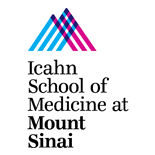Request Demo
Last update 08 May 2025
Calculus, Ureteral
Last update 08 May 2025
Basic Info
Synonyms CALCULUS URETERAL, Calculi, Ureteral, Calculus of ureter + [26] |
Introduction Stones in the URETER that are formed in the KIDNEY. They are rarely more than 5 mm in diameter for larger renal stones cannot enter ureters. They are often lodged at the ureteral narrowing and can cause excruciating renal colic. |
Related
3
Drugs associated with Calculus, UreteralTarget- |
Mechanism- |
Originator Org. |
Active Indication |
Inactive Indication- |
Drug Highest PhaseApproved |
First Approval Ctry. / Loc. China |
First Approval Date14 Sep 2022 |
Target |
Mechanism ADRA1 antagonists |
Active Org. |
Originator Org. |
Active Indication |
Inactive Indication |
Drug Highest PhaseApproved |
First Approval Ctry. / Loc. Japan |
First Approval Date23 Jan 2006 |
Target- |
Mechanism- |
Active Org. |
Originator Org. |
Active Indication |
Inactive Indication |
Drug Highest PhaseApproved |
First Approval Ctry. / Loc. Japan |
First Approval Date02 Mar 2005 |
81
Clinical Trials associated with Calculus, UreteralNCT06158620
Intra-nasal Ketorolac Versus Oral Diclofenac for Acute Ureteral Stent-associated Pain Following Ureteroscopy for Stone Disease
Objective: To improve quality-of-life and health care delivery to patients receiving ureteral stents.
Specific Aims: Evaluate the feasibility, practicality, and qualitative outcomes of utilizing intra-nasal ketorolac in patients with indwelling ureteral stents (Phase I), followed by a randomized trial comparing two non-steroidal anti-inflammatory drugs, intra-nasal Ketorolac versus oral Diclofenac.
Hypotheses: Due to its favorable pharmacokinetics in relieving acute pain, investigators expect improved pain scores and a lower rate of unplanned clinical encounters in patients receiving intra-nasal ketorolac compared to those taking oral diclofenac following ureteroscopic surgery for urolithiasis.
Study Rationale: Following ureteroscopic management of urolithiasis, patient with indwelling ureter stents have higher levels of discomfort compared to those without a ureter stent. Prior studies showed that intramuscular Ketorolac at time of ureter stent removal decreased the incidence of unplanned clinical encounters. Furthermore, onset of analgesic effect by intra-nasal ketorolac is faster than its oral form, and similar its intramuscular and intravenous counterparts.
Specific Aims: Evaluate the feasibility, practicality, and qualitative outcomes of utilizing intra-nasal ketorolac in patients with indwelling ureteral stents (Phase I), followed by a randomized trial comparing two non-steroidal anti-inflammatory drugs, intra-nasal Ketorolac versus oral Diclofenac.
Hypotheses: Due to its favorable pharmacokinetics in relieving acute pain, investigators expect improved pain scores and a lower rate of unplanned clinical encounters in patients receiving intra-nasal ketorolac compared to those taking oral diclofenac following ureteroscopic surgery for urolithiasis.
Study Rationale: Following ureteroscopic management of urolithiasis, patient with indwelling ureter stents have higher levels of discomfort compared to those without a ureter stent. Prior studies showed that intramuscular Ketorolac at time of ureter stent removal decreased the incidence of unplanned clinical encounters. Furthermore, onset of analgesic effect by intra-nasal ketorolac is faster than its oral form, and similar its intramuscular and intravenous counterparts.
Start Date01 Mar 2025 |
Sponsor / Collaborator |
NCT06798753
The Presence of Ureteral Calculi Upon Supine PCNL Completion: Occlusion Balloon Catheter Versus 5FR Ureteral Catheter
Occlusion Balloon catheter provides the ability to occlude the exit of the kidney pelvis during percutaneous nephrolithotomy (PCNL) and potentially prevents the migration of stone fragments into the ureter. The necessity for it might be questioned during supine PCNL due to the upward oblique position of the kidney. The objective of the study is to compare the presence of ureteral stone fragments upon completion of supine PCNL with and without using an occlusion balloon catheter (OBC).
Start Date23 Jan 2025 |
Sponsor / Collaborator |
ChiCTR2400094640
Application of list-based video education in the health education of patients with daytime ureteroscopy lithotripsy
Start Date25 Dec 2024 |
Sponsor / Collaborator |
100 Clinical Results associated with Calculus, Ureteral
Login to view more data
100 Translational Medicine associated with Calculus, Ureteral
Login to view more data
0 Patents (Medical) associated with Calculus, Ureteral
Login to view more data
2,011
Literatures (Medical) associated with Calculus, Ureteral04 Apr 2025·Medicine
Ureteral orifice edema and stenting challenges in diabetic patients: Lessons from a case report
Article
Author: Guo, Shuang ; Hu, Yunxi ; Huang, Denghui ; Yang, Wenjiang ; Liu, Zhongwei
01 Apr 2025·International Journal of Surgery Case Reports
Comprehensive surgical strategy for incarcerated ureteral calculi in the context of double renal pelvis malformations: A case report
Article
Author: Guo, Qiong ; Zeng, Deyu
01 Apr 2025·Actas Urológicas Españolas (English Edition)
Is fluoroless retrograde intrarenal surgery safe and feasible in uncomplicated ureteral and renal stones? A single-center large series study
Article
Author: Baran, Ö ; Cemre Cevrin, M ; Bürlukkara, S
1
News (Medical) associated with Calculus, Ureteral24 May 2021
An ureteroscope is an endoscope designed to work and view within the ureter. Other opportunities frequently used by endourologists and urologists is in incorporating the nephroscope and cystoscope. Even though such opportunities now allow modern surgical stone treatment, they have been routinely used for the last few years. The use of ureteroscopy is on the rise for the treating ureteral calculi during pregnancy and for persistent renal colic patients without ureteral calculi detected in ultrasound. This treatment may cause a clinical dilemma owing to the possible risks for both the fetus and mother.
The study by TMR Research (TMR) intends to inform on the rapid evolution and projections of the global ureteroscopy devices market in detail. The study also emphasizes on competitor dynamics of the market by factoring in strength and weaknesses of well-known market players.
Get Brochure of the Report @
Global Ureteroscopy Devices Market: Drivers & Restraints
The development of global ureteroscopy devices market rides mainly on the continual growth in the area of ureteroscopy, interrupted by improvements in imaging tech. The rising acceptance of digital flexible ureteroscope is an essential growth highlighting development of the global ureteroscopy devices market. Including high-quality digital image sensors in the product has been sustaining striking improvements in ureteroscopy devices market. This has already improved surgical outcomes of ureteroscopy devices in the removal of stones.
The growing practice of flexible ureteroscopy devices among urologists to treat and diagnose lesions of the upper urinary tract is a prime aspect driving the global market. Moreover, the significant demand for minimally-invasive methods in urinary calculus diseases is a prime aspect emphasizing growth in the global ureteroscopy devices market. New methods for surgical management of urolithiasis for the past few years are projected to make a way for exciting, new avenues in the global ureteroscopy devices market.
However, the high cost of reusable and digital ureteroscopy devices might hinder demand in the global ureteroscopy devices market. Nevertheless, the market will be benefitted by adopting minimally invasive methods in managing the rising incidence of urologic diseases in young adults.
Global Ureteroscopy Devices Market: Market Potential
The LithoVue Empower Retrieval Deployment Device is launched by Boston Scientific in the Europe and North America for retrieval of kidney stones through flexible ureteroscopy (URS). This device was developed due to a need to enhance the procedural bottlenecks during kidney stone removal methods.
The device aims to address and identify unmet needs for evolution of treatment of urologic and pelvic conditions, enhance quality of care, advance patient outcomes, and reduce procedural costs. Such aspects are expected to promote growth in the global ureters copy devices market.
Buy this Premium Report @
Global Ureteroscopy Devices Market: Geographical Outlook
Significant growth for ureteroscopy devices is observed in the North America. The growth is fueled by the extensive uptake of ureteroscopy devices in non-invasively treating urolithiasis among patient populations and the recent launch of innovative products. Europe is the second largest market for ureteroscopes owing to rapidly growing aging population demanding advanced medical devices, increasing number of kidney stone treatment procedures, favorable reimbursement policies, and presence of key players with strong distribution channels in the Germany and other parts of Western Europe.
Global Ureteroscopy Devices Market: Competitive Landscape
The global ureteroscopy devices market is highly fragmented and the key players are introducing various strategies to maintain a significant position in the global ureteroscope market. Some of them include new product launches, cost effective and efficient, mergers and acquisitions. Some of the prominent companies in the global ureteroscopy devices market include Boston Scientific Corporation, KARL STORZ SE & Co. KG, Olympus Corporation, PENTAX Medical, and Stryker.
Get Table of Content of the Report @
READ EXCLUSIVE PRESS RELEASES AND ARTICLES:
About TMR Research
TMR Research is a premier provider of customized market research and consulting services to business entities keen on succeeding in today’s supercharged economic climate. Armed with an experienced, dedicated, and dynamic team of analysts, we are redefining the way our clients’ conduct business by providing them with authoritative and trusted research studies in tune with the latest methodologies and market trends.
Contact:
Rohit Bhisey
TMR Research,
3739 Balboa St # 1097,
San Francisco, CA 94121
United States
Tel: +1-415-520-1050
Visit Site:
Acquisition
Analysis
Perform a panoramic analysis of this field.
login
or

AI Agents Built for Biopharma Breakthroughs
Accelerate discovery. Empower decisions. Transform outcomes.
Get started for free today!
Accelerate Strategic R&D decision making with Synapse, PatSnap’s AI-powered Connected Innovation Intelligence Platform Built for Life Sciences Professionals.
Start your data trial now!
Synapse data is also accessible to external entities via APIs or data packages. Empower better decisions with the latest in pharmaceutical intelligence.
Bio
Bio Sequences Search & Analysis
Sign up for free
Chemical
Chemical Structures Search & Analysis
Sign up for free





